A Salvaged Banksy Mural is Now on View in NYC
This unique Banksy mural goes up for auction on May 21st in NYC!


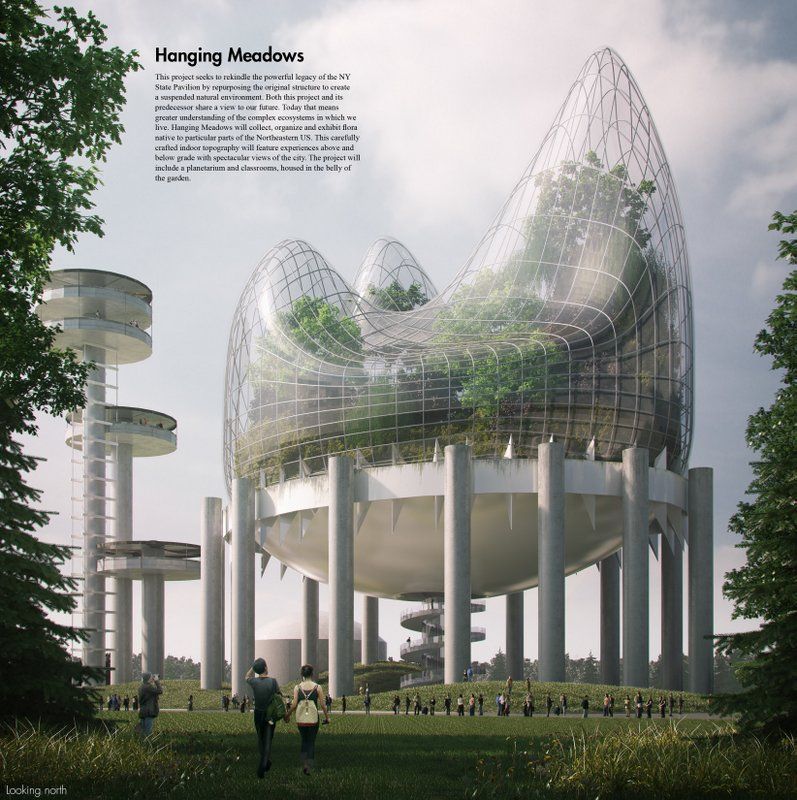
Hanging Meadows by Aidan Doyle and Sarah Wan
In March, we announced that the National Trust for Historic Preservation would run a competition to reimagine the New York State Pavilion in Flushing Meadows-Corona Park, designed by architect Philip Johnson for the 1964 World’s Fair. The site, an iconic landmark along Grand Central Parkway, has been a popular site for urban explorers (as seen in photographs of the crumbling towers and of the pavilion itself). Steady community activism, including a documentary film has led to numerous local and national government initiatives over the past few years and the site has been opened up on occasion to the public.
Yesterday at the Queens Museum, the winners of the National Trust competition were announced and the designs will be on exhibit inside the museum until August 28th. The competition was meant to be visionary, to inspire in the public and government officials the possibilities of what the New York State Pavilion could become in the 21st century.
Queens Borough President, Melinda Katz, sponsored the ideas competition, which advocated an “anything goes” criteria. Judges included noted architecture critic Paul Goldberger, who said “The outpouring of new ideas for its re-use not only shows how beloved this structure is, it gives me confidence that this great building can have a future that will be as meaningful as its past.”
Three prizes were distributed, in addition to a Queens winner selected from entries by the borough’s residents. Here are the winners:
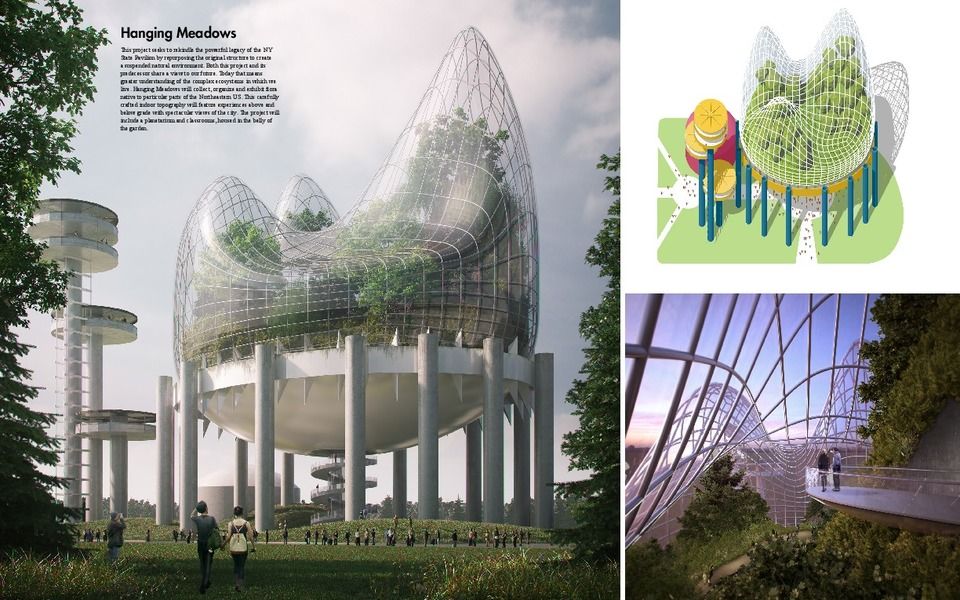
Perhaps the most visually stunning, we can see why “Hanging Meadows” by Aidan Doyle and Sarah Wan was selected. The futuristic greenhouse makes a strong contrast with the Modernist original Pavilion, futuristic for its time in the mid-20th century. The Pavilion becomes a base to a suspended natural environment, which would contain native plants and flowers from the northeastern United States. Suspended walkways would provide paths within the greenhouse structure and give views of New York City. Below the suspended garden, there would be a new planetarium and classroom space, which leaves room for open public access on the original floor of the structure.
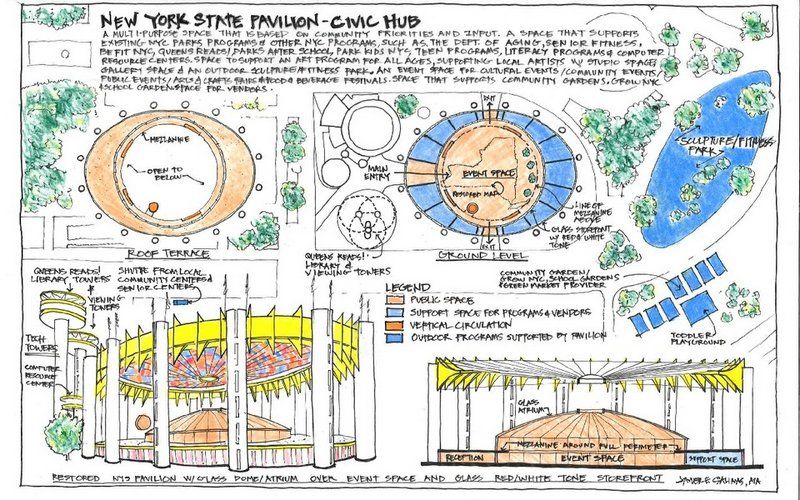
The “Civic Hub” would add a glass event space inside the pavilion, the towers would become a library and a community resource center, and a sculpture/fitness garden and toddler playground would be added to the grounds. The community is the focus of this proposal, with multi-purposes spaces that would host public programs. Shuttles would bring residents from the local community and senior centers would provide additional access to the Civic Hub. The idea here is to use the site to support and expand New York State Parks programming.
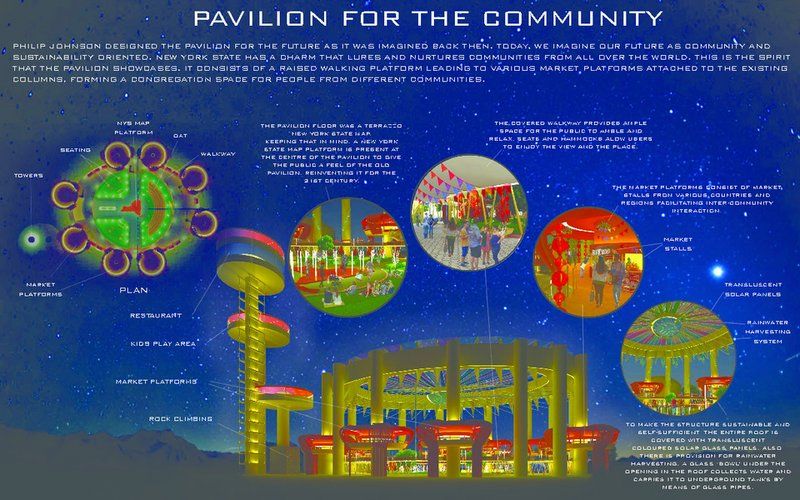
The third prize plan “Pavilion for the Community,” by Rishi Kejrewal and Shaurya Sharma also focuses on the surrounding neighborhoods, creating a “cultural marketplace” that focuses on sustainability, diversity and education. This proposal aims to keep the terrazzo floor map of the State of New York, adding elevated platforms around the pillars of the structure. These platforms would host market stalls from different cultures and countries, “facilitating inter-comunity interaction.” The structure would be powered by translucent solar panels and a rainwater harvesting system would be installed on the roof, bringing water down through glass pipes. The towers would host a playground, restaurant and more markets.
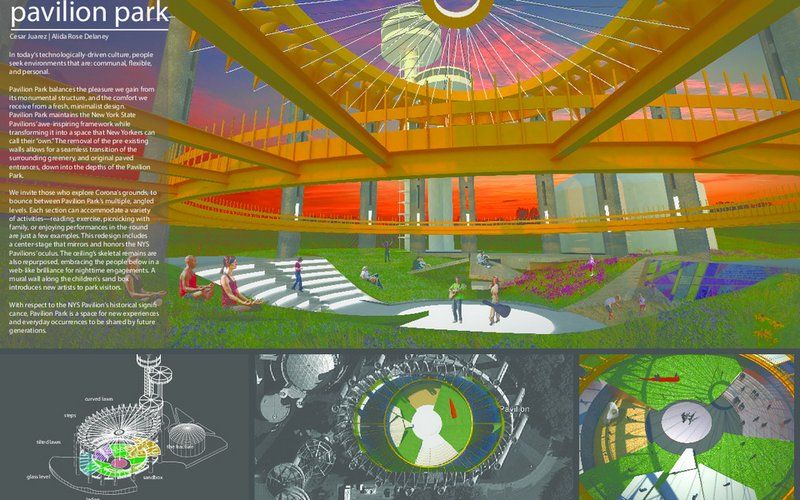
Pavilion Park is a project designed by Queens residents Cesar Juarez and Alida Rose Delaney, using technology as a starting point for new design. They write that “in today’s technologically-driven culture, people seek environments that are communal, flexible and personal.” They want the New York State Pavilion to be a place that New Yorkers “can call their own.” To do this, they propose the removal of the existing walls to open up the space, bringing greenery in through angled levels that can accommodate different types of activities and a center stage area.. A mural wall would be added to feature new artists
Next, check out our video from inside the New York State Pavilion we shot on our visit in June. Discover the Top 10 Secrets of Flushing Meadows-Corona Park.
Subscribe to our newsletter